Related Research Articles
Robert Adams is an American photographer who has focused on the changing landscape of the American West. His work first came to prominence in the mid-1970s through his book The New West (1974) and his participation in the exhibition New Topographics: Photographs of a Man-Altered Landscape in 1975. He has received two Guggenheim Fellowships, a MacArthur Fellowship, the Deutsche Börse Photography Prize and the Hasselblad Award.
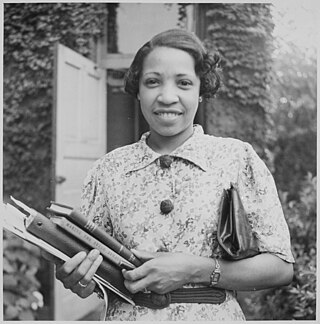
Lois Mailou Jones (1905–1998) was an artist and educator. Her work can be found in the collections of the Smithsonian American Art Museum, The Metropolitan Museum of Art, the National Museum of Women in the Arts, the Brooklyn Museum, the Museum of Fine Arts, Boston, Muscarelle Museum of Art, and The Phillips Collection. She is often associated with the Harlem Renaissance.
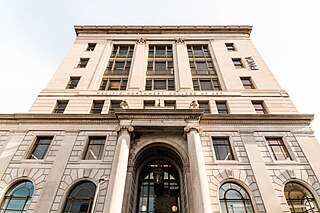
The Pacific Northwest College of Art (PNCA) is an art school of Willamette University and is located in Portland, Oregon. Established in 1909, the art school grants Bachelor of Fine Arts degrees and graduate degrees including the Master of Fine Arts (MFA) and Master of Arts (MA) degrees. It has an enrollment of about 500 students. The college merged with Willamette University in 2021.

Stephanie Syjuco, is a Filipino-American conceptual artist and educator. Born in the Philippines, she moved to the San Francisco Bay Area in 1977. Syjuco received her MFA from Stanford University in 2005, and BFA in Sculpture from the San Francisco Art Institute in 1995. She currently lives and works in Oakland, California.
Alison Saar is a Los Angeles, California based sculptor, mixed-media, and installation artist. Her artwork focuses on the African diaspora and black female identity and is influenced by African, Caribbean, and Latin American folk art and spirituality. Saar is well known for "transforming found objects to reflect themes of cultural and social identity, history, and religion."
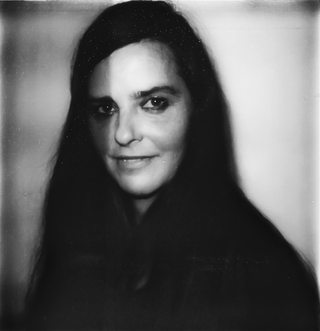
Rineke Dijkstra HonFRPS is a Dutch photographer. She lives and works in Amsterdam. Dijkstra has been awarded an Honorary Fellowship of the Royal Photographic Society, the 1999 Citibank Private Bank Photography Prize and the 2017 Hasselblad Award.

Post-black art is a category of contemporary African American art. It is a paradoxical genre of art where race and racism are intertwined in a way that rejects their interaction. I.e., it is art about the black experience that attempts to dispel the notion that race matters. It uses enigmatic themes wherein black can substitute for white. Some suggest the term is attributable to the 1995 book The End of Blackness by Debra Dickerson.
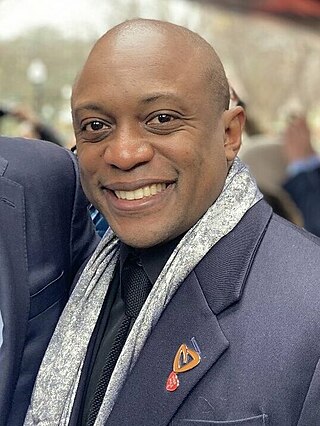
Hank Willis Thomas is an American conceptual artist. Based in Brooklyn, New York, he works primarily with themes related to identity, history, and popular culture.
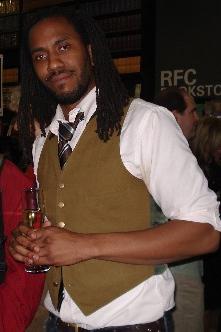
Rashid Johnson is an American artist who produces conceptual post-black art. Johnson first received critical attention in 2001 at the age of 24, when his work was included in Freestyle (2001) curated by Thelma Golden at the Studio Museum in Harlem. He studied at Columbia College Chicago and the School of the Art Institute of Chicago and his work has been exhibited around the world.

Nick Cave is an American sculptor, dancer, performance artist, and professor. He is best known for his Soundsuit series: wearable assemblage fabric sculptures that are bright, whimsical, and other-worldly, often made with found objects. He also trained as a dancer with Alvin Ailey and often incorporates dance and performance into his works. His later sculptures have focused on color theory and included mixed media and large-scale installations. He lives in Chicago, Illinois, and directs the graduate fashion program at the School of the Art Institute of Chicago. He continues to work on Soundsuits as well as works completed as a sculptor, dancer, and performance artist.

Arnold Blanch, was born and raised in Mantorville, Minnesota. He was an American modernist painter, etcher, illustrator, lithographer, muralist, printmaker and art teacher.
Molly Springfield is an American artist whose work includes labor-intensive drawings of printed texts and visual explorations of the history of information and mediated representation.
John Lees is an American contemporary expressionist artist who works primarily in painting.

Shimon Attie is an American visual artist. He was awarded a Guggenheim Fellowship in 2008, The Rome Prize in 2001 and a Visual Artist Fellowship from Harvard University's Radcliffe Institute for Advance Study in 2007. His work spans a variety of media, including photography, site-specific installation, multiple channel immersive video installation, performance, and new media. Much of Attie's practice explores how a wide range of contemporary media may be used to re-imagine new relationships between space, time, place, and identity. Much of Attie's works in the 90s dealt with the history of World War II. He first garnered significant international attention by slide projecting images of past Jewish life onto contemporary locations in Berlin. More recent projects have involved using a range of media to engage local communities to find new ways of representing their history, memory and potential futures. Attie's artworks and interventions are site-specific and immersive in nature, and tend to engage subject matter that is both social, political and psychological. In 2013, five monographs have been published on Attie's work, which has also been the subject of a number of films aired on PBS, BBC, and ARD. Since receiving his MFA in 1991, Attie has realized approximately 25 major projects in ten countries around the world. Most recently, in 2013-14, Shimon Attie was awarded the Lee Krasner Lifetime Achievement Award in Art.
Laylah Ali (born 1968) is a contemporary visual artist known for paintings in which ambiguous race relations are depicted with a graphic clarity and cartoon strip format.
Freestyle was a contemporary art exhibition at The Studio Museum in Harlem from April 28-June 24, 2001 curated by Thelma Golden with the support of curatorial assistant Christine Y. Kim. Golden curated the works of 28 emerging black artists for the exhibition, characterizing the work as 'Post-Black'. The latter is a term she generated along with artist Glenn Ligon as a genre of art "that had ideological and chronological dimensions and repercussions. It was characterized by artists who were adamant about not being labeled as 'black' artists, though their work was steeped, in fact deeply interested, in redefining complex notions of blackness." Freestyle was her first major project at The Studio Museum in Harlem and the first of an ongoing series of 'F' themed exhibitions including Frequency, Flow and Fore. The most recent iteration of the series was 2017's Fictions.

Jennie C. Jones is an African-American artist living and working in Brooklyn, New York. Her work has been described, by Ken Johnson, as evoking minimalism, and paying tribute to the cross-pollination of different genres of music, especially jazz. As an artist, she connects most of her work between art and sound. Such connections are made with multiple mediums, from paintings to sculptures and paper to audio collages. In 2012, Jones was the recipient of the Joyce Alexander Wien Prize, one of the biggest awards given to an individual artist in the United States. The prize honors one African-American artist who has proven their commitment to innovation and creativity, with an award of 50,000 dollars. In December 2015 a 10-year survey of Jones's work, titled Compilation, opened at the Contemporary Arts Museum in Houston, Texas.
Alexandra Munroe is an American curator, Asia scholar, and author focusing on art, culture, and institutional global strategy. She has produced over 40 exhibitions and published pioneering scholarship on modern and contemporary Asian art. She organized the first major North American retrospectives of artists Yayoi Kusama (1989), Daido Moriyama (1999), Yoko Ono (2000), Mu Xin (2001), Cai Guo-Qiang (2008), and Lee Ufan (2011), among others, and has brought such historic avant-garde movements as Gutai, Mono-ha, and Chinese conceptual art, as well as Japanese otaku culture, to international attention. Her project Japanese Art after 1945: Scream Against the Sky (1994) is recognized for initiating the field of postwar Japanese art history in North America. Recently, Munroe was lead curator of the Guggenheim’s exhibition, Art and China after 1989: Theater of the World, which the New York Times named as one of 2017’s top ten exhibitions and ARTnews named as one of the decade’s top 25 most influential shows. Credited for the far-reaching impact of her exhibitions and scholarship bolstering knowledge of postwar Japanese art history in America and Japan, she received the 2017 Japan Foundation Award and the 2018 Commissioner for Cultural Affairs Award, both bestowed by the government of Japan.
Sage Sohier is an American photographer and educator.
Christine Y. Kim is an American curator of contemporary art. She is currently the Britton Family Curator-at-Large at Tate. Prior to this post, Kim held the position of Curator of Contemporary Art at the Los Angeles County Museum of Art. Before her appointment at LACMA in 2009, she was Associate Curator at The Studio Museum in Harlem in New York. She is best known for her exhibitions of and publications on artists of color, diasporic and marginalized discourses, and 21st-century technology and artistic practices.
References
- ↑ "Arnold J. Kemp Faculty Profile". Virginia Commonwealth University.
- ↑ Cotter, Holland (April 7, 2006). "Energy and Abstraction at the Studio Museum in Harlem". The New York Times. Retrieved July 29, 2015.
- ↑ "Arnold J. Kemp - John Simon Guggenheim Memorial Foundation". Archived from the original on 2013-10-02. Retrieved 2013-09-28.
- ↑ "Looking the Other Way: A Review of Arnold J. Kemp at M. LeBlanc and the Neubauer Collegium | Newcity Art Looking the Other Way: A Review of Arnold J. Kemp at M. LeBlanc and the Neubauer Collegium". 2022-03-30. Retrieved 2022-04-06.
- ↑ "Arnold J. Kemp – C.V." www.worksarnoldjkemp.com. Archived from the original on 2018-02-09. Retrieved 2018-02-02.
- ↑ Radon, Lisa. "Arnold Kemp Awarded Guggenheim". PNCA: Untitled Online Magazine.
- ↑ Margolis-Pineo, Sarah (March 20, 2013). "WHEN WILL MY LOVE BE RIGHT: A CONVERSATION WITH ARNOLD J. KEMP". Bad at Sports: Contemporary Art Talk.
- ↑ Cotter, Holland (November 9, 2001). "ART IN REVIEW; Arnold J. Kemp". The New York Times. Retrieved July 29, 2015.